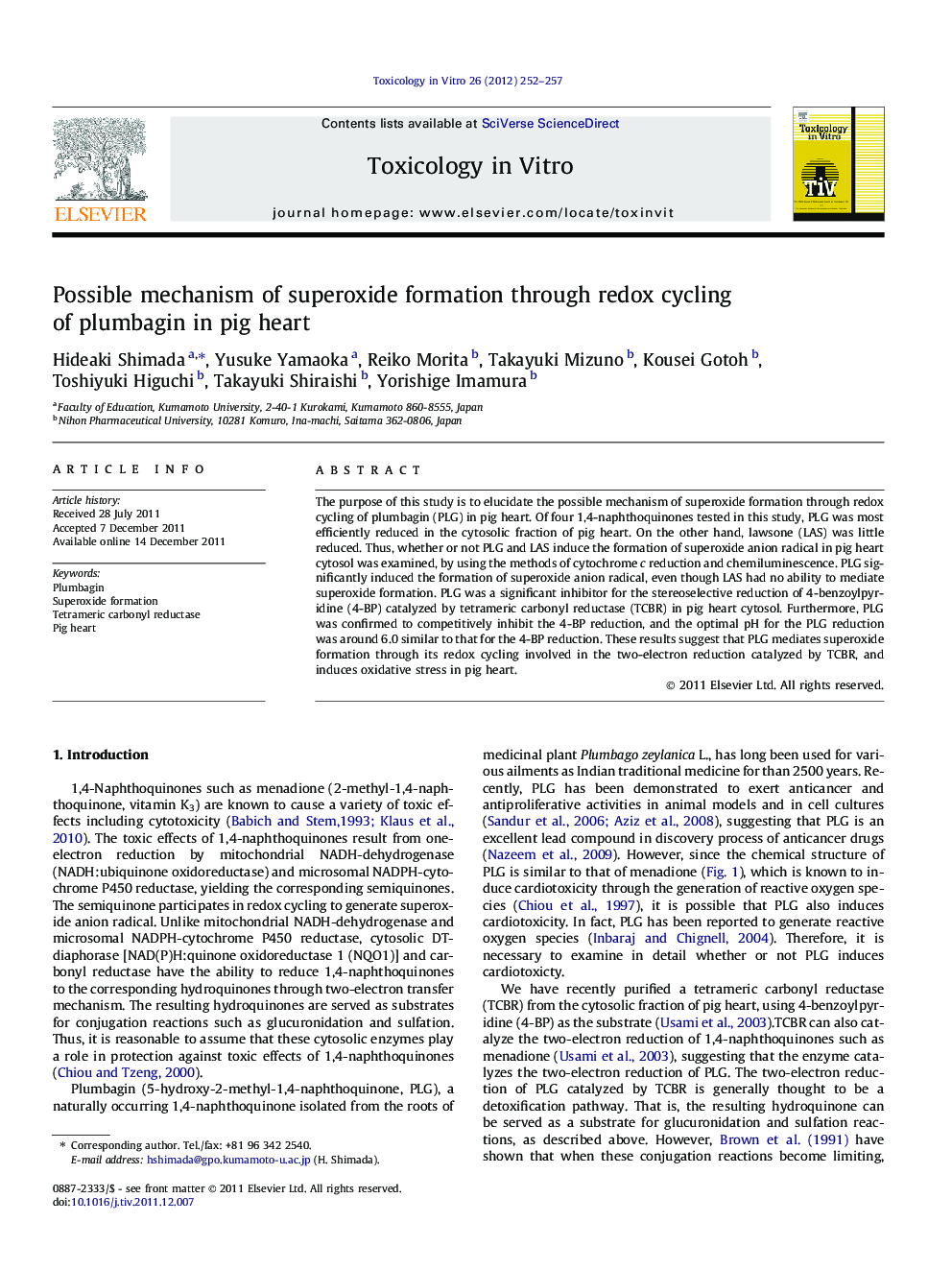| Article ID | Journal | Published Year | Pages | File Type |
|---|---|---|---|---|
| 5863058 | Toxicology in Vitro | 2012 | 6 Pages |
The purpose of this study is to elucidate the possible mechanism of superoxide formation through redox cycling of plumbagin (PLG) in pig heart. Of four 1,4-naphthoquinones tested in this study, PLG was most efficiently reduced in the cytosolic fraction of pig heart. On the other hand, lawsone (LAS) was little reduced. Thus, whether or not PLG and LAS induce the formation of superoxide anion radical in pig heart cytosol was examined, by using the methods of cytochrome c reduction and chemiluminescence. PLG significantly induced the formation of superoxide anion radical, even though LAS had no ability to mediate superoxide formation. PLG was a significant inhibitor for the stereoselective reduction of 4-benzoylpyridine (4-BP) catalyzed by tetrameric carbonyl reductase (TCBR) in pig heart cytosol. Furthermore, PLG was confirmed to competitively inhibit the 4-BP reduction, and the optimal pH for the PLG reduction was around 6.0 similar to that for the 4-BP reduction. These results suggest that PLG mediates superoxide formation through its redox cycling involved in the two-electron reduction catalyzed by TCBR, and induces oxidative stress in pig heart.
⺠Plumbagin (PLG) induces superoxide formation in pig heart cytosol. ⺠Tetrameric carbonyl reductase (TCBR) is an enzyme present in pig heart cytosol. ⺠The two-electron reduction of PLG is catalyzed by TCBR in pig heart cytosol. ⺠The two-electron reduction of PLG can subsequently involve its redox cycling. ⺠PLG mediates superoxide formation through its redox cycling in pig heart cytosol.
